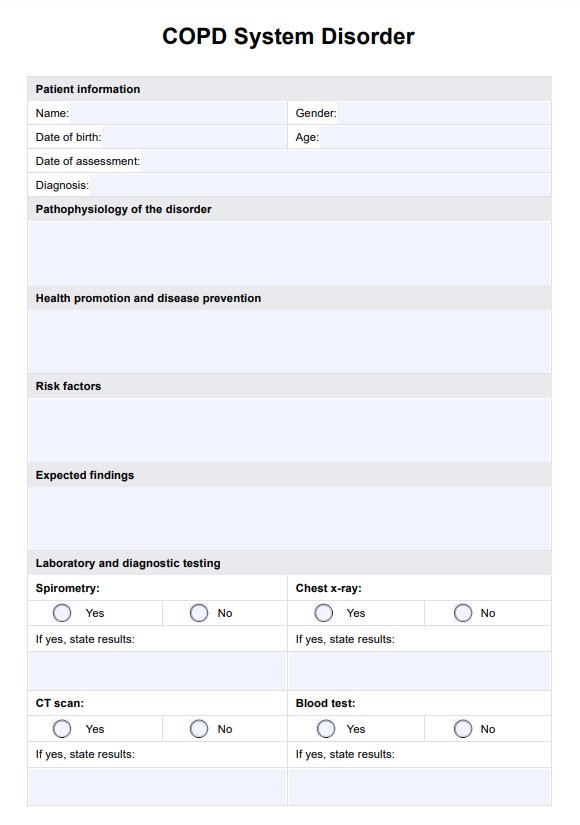While chronic obstructive pulmonary disease (COPD) is irreversible and lung tissue cannot regenerate, treatments can improve lung function, relieve symptoms, and slow disease progression. Lifestyle changes, medications, and pulmonary rehabilitation help patients manage the condition effectively.

COPD System Disorder
Utilize this in-depth guide to create an effective COPD system disorder template to elevate care and education around this prevalent respiratory disorder.
COPD System Disorder Template
Commonly asked questions
Individuals with severe or very severe chronic obstructive pulmonary disease (COPD) (Stages 3 and 4) that significantly impair daily activities may qualify for disability benefits. Eligibility depends on documented breathing tests, frequent exacerbations, and limitations in work capacity.
With proper disease management, including medications, lifestyle adjustments, and pulmonary rehabilitation, individuals with mild to moderate chronic obstructive pulmonary disease (COPD) can maintain an active, fulfilling life. Early intervention and adherence to treatment plans are crucial for preserving quality of life.
EHR and practice management software
Get started for free
*No credit card required
Free
$0/usd
Unlimited clients
Telehealth
1GB of storage
Client portal text
Automated billing and online payments











